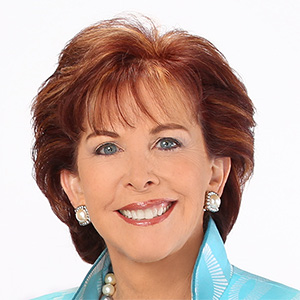Trump's immigration crackdown straining labor force for Minnesota ag, food operations
Published in Business News
As agricultural and canning operations are ramping up for the summer, they are trying to figure out the possible repercussions of stepped-up immigration enforcement.
The workforce for these businesses has become tighter over the past few years, and many were worried that the threat of raids coupled with increased security at the Mexican border would further deplete summer help.
“It’s kind of a freak-out time [for the agriculture supply line],” said Fernando Quijano, economics educator with the University of Minnesota educator in Moorhead. “We’re talking about agriculture, man, some of the most serious business we have in the United States.”
This week many farm groups and commodity associations are staying quiet about the latest guidance from the Department of Homeland Security. Just a week ago, DHS reportedly paused raids on rural areas, after pressure from those same groups.
But on Monday, the Trump administration reversed course. DHS officials said there would be “no safe spaces” for companies that use undocumented labor.
The policy whipsaw came after a meatpacking plant raid in Nebraska last week and heavy lobbying of U.S. Agriculture Secretary Brooke Rollins and other officials by farm and food companies.
The mixed signals carry another level of worry for those who rely on immigrant labor, say Minnesota rural economic experts.
Most of these dairy and pork farms, meat processors and vegetable canneries are in rural Minnesota, where support for President Donald Trump remains close to 50%.
Still, many believed last week the behind-the-scenes pleadings had softened the administration’s stance, Quijano said.
“It seems to me Trump is realizing that we need some sort of protections (for farm workers),” he said.
Tracking undocumented labor is difficult. Minnesota was home to anywhere between 50,000 to 70,000 unauthorized immigrant workers in 2022, according to estimates from the Center for Migration Studies and the Pew Research Center. A large share of them work on farms or food and meat processing.
But those numbers are down significantly from previous estimates a decade ago. Immigration policies have affected how willing undocumented laborers are to seek jobs in the state, and businesses hiring those labors are struggling to make up the difference.
“A lot of those industries have been dealing with a really tight labor market since 2017,” said Cameron Macht, a regional labor analyst manager for the Minnesota Department of Employment and Economic Development. “Constraining the number of available workers is a challenge ... they’re already looking for more workers and so not having access to a portion of workers is going to create an extra challenge.”
Only 27% of farms hire outside help in Minnesota, according to the USDA census, said Lauren Heers, a University of Minnesota extension educator for the central part of the state. A good number of those workers are immigrants.
“Depending on who you ask, you’ll hear different experiences — many migrant workers, documented or not, report fears of workplace immigration raids," she said. “Some operators are seeing this reflected in day-to-day labor availability, while some operators report this isn’t an issue.”
In southwestern Minnesota’s Lyon County, farmer Dennis Fultz, 78, said Trump’s change of course regarding the food and ag industries is another example of how inconsistent federal government policies are this year.
“It’s frustrating,” said Fultz, who describes himself as a lifelong Republican who voted for Kamala Harris last November.
But he also said that he and other farmers in Lyon County, which is home to a turkey processing site among other food operations, are finding the workers they need.
Yet for areas in the state starting to see a tightening, the anxiety immigrants have felt this year is another barrier to finding enough workers.
And in Minnesota, fear is spreading that the first, big raid of a packing house or farm site could be near.
“The Trump administration’s whiplash approach to immigration enforcement is creating uncertainty all across rural communities,” said Sen. Tina Smith, the Democrat from Minnesota. “Families, farmers and food workers deserve stability, not political stunts that disrupt lives and hurt rural economies.”
Last week, Immigrations and Custom Enforcement agents detained 100 workers at a JBS meatpacking plant outside Omaha. In Worthington, Minn., home to a large pork slaughterhouse owned by JBS, the Brazilian-owned meat giant, residents reported ICE knocking on doors.
Of the 120,448 job openings in 2024, according to a state website, over 18,000 were in food preparations. Fewer than 500 were in farming.
When the HyLife pork plant in Windom, Minnesota, shuttered two years ago, roughly half of its 1,000-person workforce was on foreign labor visas, including many from the same hometown of Salvatierra, Mexico.
As of 2024, Minnesota has around 4,000 ag workers with H-2A visas, meaning they’re temporarily employed for seasonal work as farmers and ag concerns can’t find enough domestic workers.
H2A visa records in the state show Stevens County, home to mega dairy farms, as the largest recipient of H2A labor.
But experts say these populations often are different. H2A workers may come from eastern Europe or South Africa. Meanwhile, a majority of undocumented workers, often those working livestock operations, hail from Mexico or Central America.
Various statewide business and community groups are lobbying for immigration and visa reform to bring in more foreign workers, arguing Minnesota won’t be able to continue growing without foreign-born labor.
A Minnesota Chamber of Commerce report in February highlighted how the state’s immigrant population is driving population and labor gains. Employment among immigrant workers increased by 7% between 2019 and 2023, compared to less than 1% for native Minnesotans.
“Over the past 10 years, half of the new labor force in the state has come from foreign-born workers,” said Macht, the DEED analyst. “The match with job vacancies and available openings in the state and the industries that they have helped fill jobs in is just incredibly important to the vitality of the state.”
Nationwide, the number of certified H-2A workers grew by 64.7%, from 224,965 to 370,628, according to numbers from the Washington-based American Immigration Council.
©2025 The Minnesota Star Tribune. Visit at startribune.com. Distributed by Tribune Content Agency, LLC.












Comments